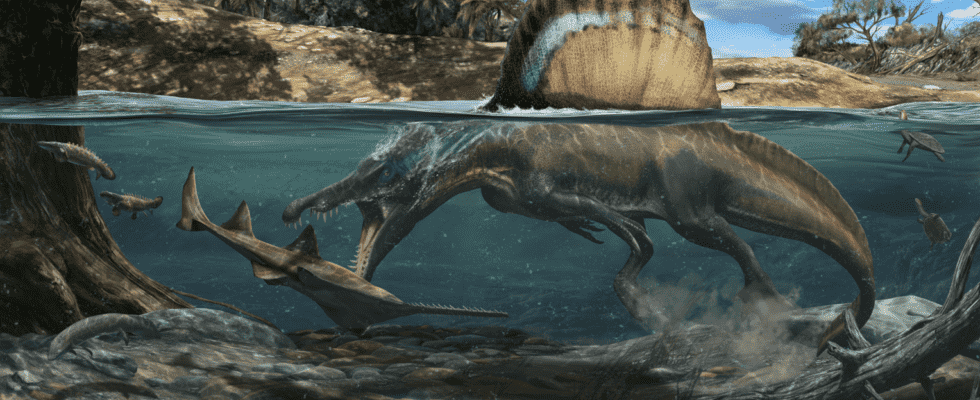Of course, spinosaurs also make an appearance in the numerous offshoots of »Jurassic Park«: In one of the films there is a fight between Spinosaurus and T. rex, in which the »King of the Dinosaurs« even loses. Whether there would have been a fight between the two in real life is more than questionable – not only because their fossils have so far only been found in regions far apart from each other. They also differed significantly in their way of life. Then Spinosaurus apparently lived and hunted primarily in and around the water, a new bone analysis by Nizar Ibrahim of the University of Portsmouth and his team in Nature suggests.
Various fossils of the predatory dinosaur found since the turn of the millennium already suggested that it could have moved well in the water. He had paddle-like feet and a fin-like tail. The cone-like teeth and the long snout also indicate that the species mainly hunted for fish and other aquatic animals: they are similar to those of other fish eaters. And in a fossil of the closely related one found in Surrey Baryonyx half-digested fish scales were also found between the rib bones. Whether these dinosaurs lived mostly on land or in the water is still unknown.
Ibrahim and co therefore examined the density of 380 bones from a wide range of extinct and non-extinct mammals such as hippos, lizards, crocodiles and birds such as penguins, as well as other dinosaurs, marine reptiles and pterosaurs. And actually owned Spinosaurus how Baryonyx “heavy,” dense bones that may have made it easier for them to stay underwater because they made buoyancy more difficult.
In principle, the working group found a clear connection between bone density and behavior when searching for food in the water: animals that had to go under water almost all had solid bones, while the cross-sections of the bones of land dwellers were more like donuts: they had a hollow core. This also applied to the species related to the spinosaurs Suchomimus. It also lived on and in the water and did eat fish, as suggested by its crocodile-like snout and conical teeth, but with its light bones it was not likely to go under.
